Planning the further development of the 5G standard (Picture: 3GPP)
The basic cornerstones of the fifth generation mobile communications standard have been established. However, this does not mean that the technical development has already been completed. On the contrary: the to-do list of the working groups that have been set up appears to be getting longer and longer. A new milestone was reached this year with Release 16 of the 3GPP standard. And work on Release 17 is in full swing.
As a global standardization organization, 3GPP ensures that mobile communications operate according to uniform specifications worldwide and that the development of new standards is compatible with the technology in use. The organization publishes the specifications developed for this purpose in its “3GPP releases”. For example, Release 8, completed in December 2008, introduced the LTE standard (4G), which was further developed with subsequent standard versions, for example to realize higher bandwidths using LTE Advanced.
It was not until the end of 2018, with the adoption of Release 15, that the foundation stone was laid for “New Radio” (NR) – the fifth generation mobile communications standard (5G). There were actually two versions of Release 15: 3GPP 5G Release 15 NSA (“Non-Standalone”) was first released. In this form, 5G depended on an initial connection setup via LTE, only then did the advantages of 5G come into play. With 5G Release 15 Standalone (SA) it was then possible to establish 5G connections without recourse to LTE.
The latest development step
In mid-2020, 3GPP was able to herald the next round of evolution – three months late due to the Covid 19 pandemic, which made physical meetings of the working groups impossible. The further development of mobile communications standards always follows the same principles: Add new features, improve existing features, simplify implementation and make operations more efficient. This also applied to the latest 5G specification. Accordingly, all parties involved benefit from the innovations, albeit to varying degrees: equipment manufacturers, network operators and, finally, the users of 5G technology. In the following we would like to give an overview of the changes resulting from the 16th edition of the 3GPP specifications.
Enhancements and improvements
- Enhanced Ultra Reliable Low Latency Communication (eURLLC): Compared to Release 15, the reliability of the connection increases from 5×9 to 6×9, i.e. to 99.9999 percent. This is due to a whole range of measures, such as shorter feedback slots, multiplexing and prioritization of connections with more flexible scheduling, and coordinated multi-point connections. While the reliability of the connection is usually bought at the expense of latency, this is not the case when upgrading to Release 16. On the contrary: the targeted latency of almost 1 ms will be easier to achieve with the next development step, while at the same time improving reliability.
- More precise positional information: In Release 15, the results corresponded to those of the 4G standard: the accuracy was 20 to 50 m when evaluated within a single cell. With Release 16 the values improve to 3 m (indoor) and 10 m (outdoor). This may not be enough to easily steer driverless transport vehicles. However, other applications can benefit from it, such as those in which power consumption is the main concern and therefore expensive triangulation over several radio cells or even GPS navigation is out of the question. In addition, the upcoming releases give hope – they should further improve localization. Indoors, Release 17 will allow position information to be provided with an accuracy of less than one meter, while Release 18 will allow a maximum deviation of a few decimeters.
- Greater energy efficiency: Here, too, a whole range of measures will work together to curb the energy hunger of 5G mobile communications. For example, secondary cell connections can be sent into a sleep mode, dynamic adjustment of the search space, improved slot planning and the use of wake-up signals each lead to a reduction in radio and analysis activities, which add up to considerable savings. This is good news not only for smartphone manufacturers and owners. It also makes it easier to use battery-powered sensors. Here, too, further progress is planned with Release 17.
- Enhanced functions for network slicing: Virtual networks within a physical structure are further improved. New functions simplify the offering, monitoring and billing of network slicing. This opens up new business models for providers and users, such as Network Slicing as a Service (NSaaS) or B2B2X (Business to Business to Everyone), i.e. the remarketing of virtual networks.
- Improved V2X communication: The use of 5G in vehicles that are in contact with the infrastructure, other vehicles or road users (Vehicle-to-Everything, V2X) is supplemented by a sidelink that is intended to simplify coordination between two vehicles (Vehicle to Vehicle, V2V), as well as data connections between vehicles and, for example, traffic lights (Vehicle to Infrastructure, V2I). One application that benefits from these changes is autonomous driving.
- Optimized MIMO: The support for multiple input multiple output (MIMO) has been brought to rank 4, reducing overhead. Other enhancements include multi-beam capability and the ability to communicate with multiple base stations simultaneously, as well as signaling and range improvements.
- Satellite, Streaming & TV: Non-Terrestric Networks (NTN) and 5G Broadcast capabilities have also been added or enhanced to enable 5G-based broadcasting services.
New features in Release 16
- Use in unlicensed spectrum: As already possible in 4G, 5G Rel-16 also allows use in frequency ranges that do not require licensing. Either exclusively in this spectrum, or by supplementing the licensed spectrum with unlicensed spectrum, thus increasing the bandwidth (License Assisted Access, LAA).
- Integrated Access Backhaul (IAB): A technology similar to the principle of the WLAN repeater. In this case, a 5G radio cell is not connected via fiber optics, radio relay or similar technologies, but simply via a 5G connection to another 5G macro cell. In this way, for example, smaller outdoor or indoor cells can be connected cost-effectively. Backhauling can either be performed on the same frequency that is available for the end devices (“in-band backhauling”) or in another frequency band (“out-of-band backhauling”). The latter avoids interference and conserves user bandwidth.
- Integrated IoT services: For the first time, wide-area network services such as Narrowband IoT (NB-IoT) and enhanced Machine Type Communication (eMTC) are now also accessible for 5G. Previously, these were only defined for LTE.
- Support for TSN (Time Sensitive Networking): 5G Release 16 supports TSN time synchronization by considering the entire end-to-end 5G system as a “time-aware system” according to the IEEE 802.1AS specification. Only the edge TSN translators (TTs) at the edges of the 5G network must support 802.1AS operations. The various TSN network elements such as UE, gNB, UPF, NW-TT and DS-TTs are synchronized with the internal 5G system clock (5G grandmaster clock).
- Management of non-public networks: In Germany, 3GPP refers to installations known as “Private Networks”, for example industrial campus networks, as “Non-Public Networks” (NPN). A number of functions simplify the installation and operation of such NPNs, both the completely independent networks and those integrated into public networks, such as those offered by the major mobile phone providers.
- LAN-like services: With Release 16, 5G networks offer communication services typically available in LAN and VPN, but with specific 5G-related features such as high performance, remote access, mobility and security. Among other things, 5G Virtual Network (VN) group identification, including membership and group data, is one of these services. It can be managed both by the administrator using NEF (Network Exposure Function) and dynamically via third-party applications. The same applies to the optimized routing, which takes place at the level of the 5G User Plane Function (UPF) in the core network.
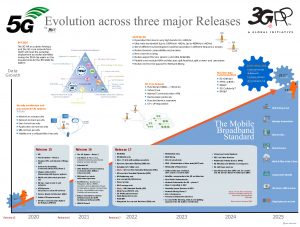
The task list for Release 17 is long, so the schedule will be reviewed again in December. Picture: 3GPP
The next step is already in progress
Since December 2019, the 3GPP working groups have already been working on the next development step, which is expected to be published as Release 17 in summer 2021, but possibly not before the turn of the year 2021/2022.
There are already a number of interesting technologies that create further application possibilities for 5G. These include the expansion of the radio spectrum up to 71 GHz, sidelink for smartphones and other devices, as already defined for vehicles, multi-SIM support (eSIM), a “5G Light”, for example for industrial sensors and cameras, and – also of interest to industrial users – new functions for the optimized use of Augmented / Virtual / Mixed Reality. A current overview of the extensive list of topics is provided by the schedule of the 3GPP consortium (PDF).
Conclusion
Even though smartphones and network coverage continue to dominate the 5G discussion in public perception, the work of the 3GPP standardization committee clearly shows what is at the heart of the development: Use cases for industry, such as IoT applications, campus networks and other vertical applications such as autonomous driving and broadcasting.
With the adoption of the standard version 16, 5G has taken another big step towards industrial use. New application possibilities, improvements in key features, energy saving measures and simplifications in setting up and operating your own networks all contribute to the return on investment of 5G networks. Rising demand at the Federal Network Agency for the reserved spectrum, numerous pilot and research projects as well as ever new 5G fairs and 5G user events show that this market is growing dynamically.
The implementation of the innovations from Release 16 should also not be long in coming: Chipset manufacturers who offered 4G and first 5G modules at the Embedded World 2020 are confident that the most important features can be realized with firmware adaptations alone and are therefore quickly available.
The virtualization of the 5G network core and the strong competition in this field, which includes classic 5G manufacturers as well as network specialists such as HP, Dell or AWS, should help to ensure that new installations based on 5G Release 16 will soon be available here as well. Market experts expect the first marketable products to be available as early as next spring. In the course of next year there should then be a broader range of products on offer. However, the successor generation based on Release 17 is not expected until around two years later.

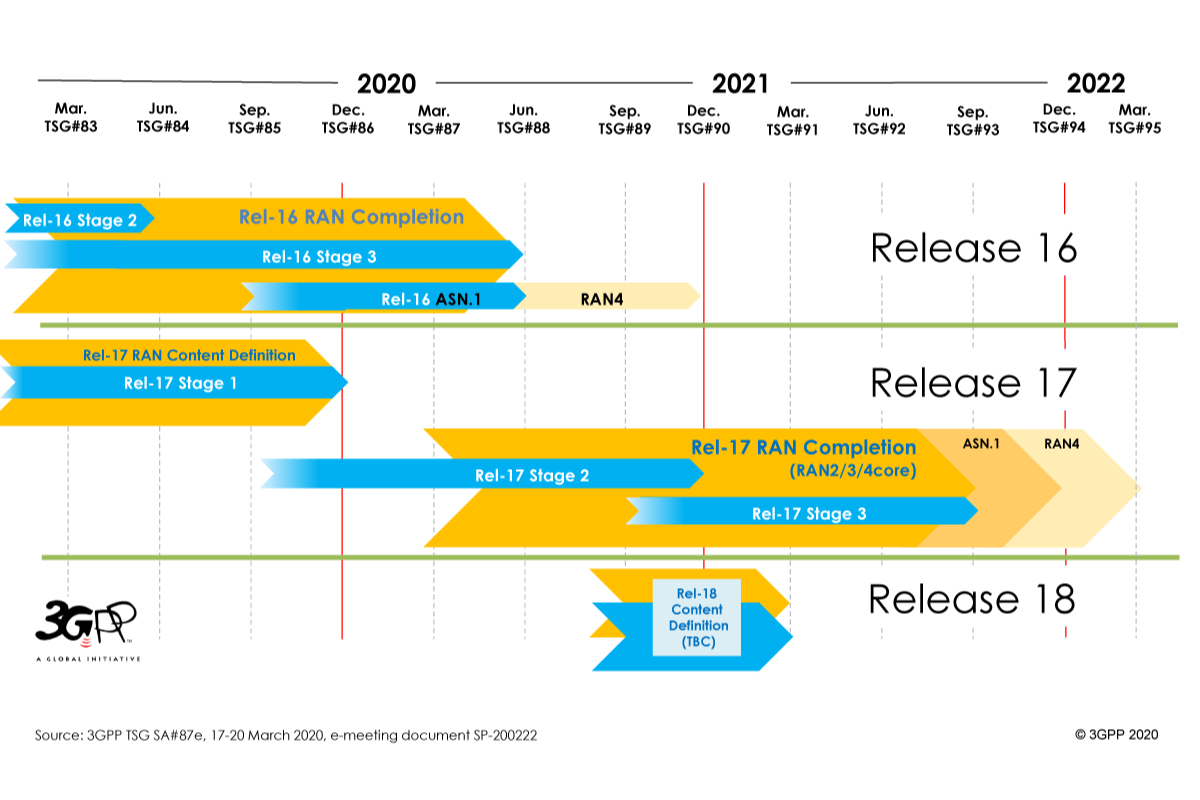
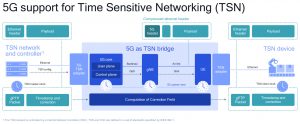


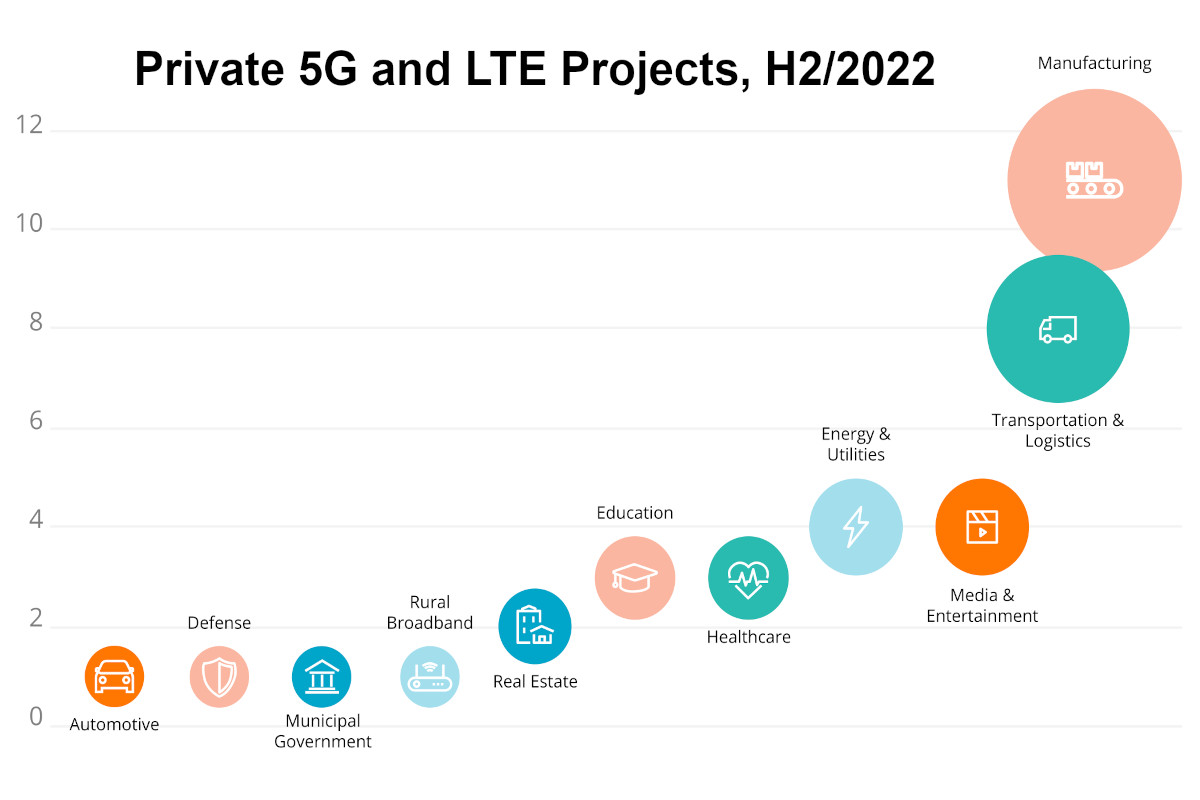
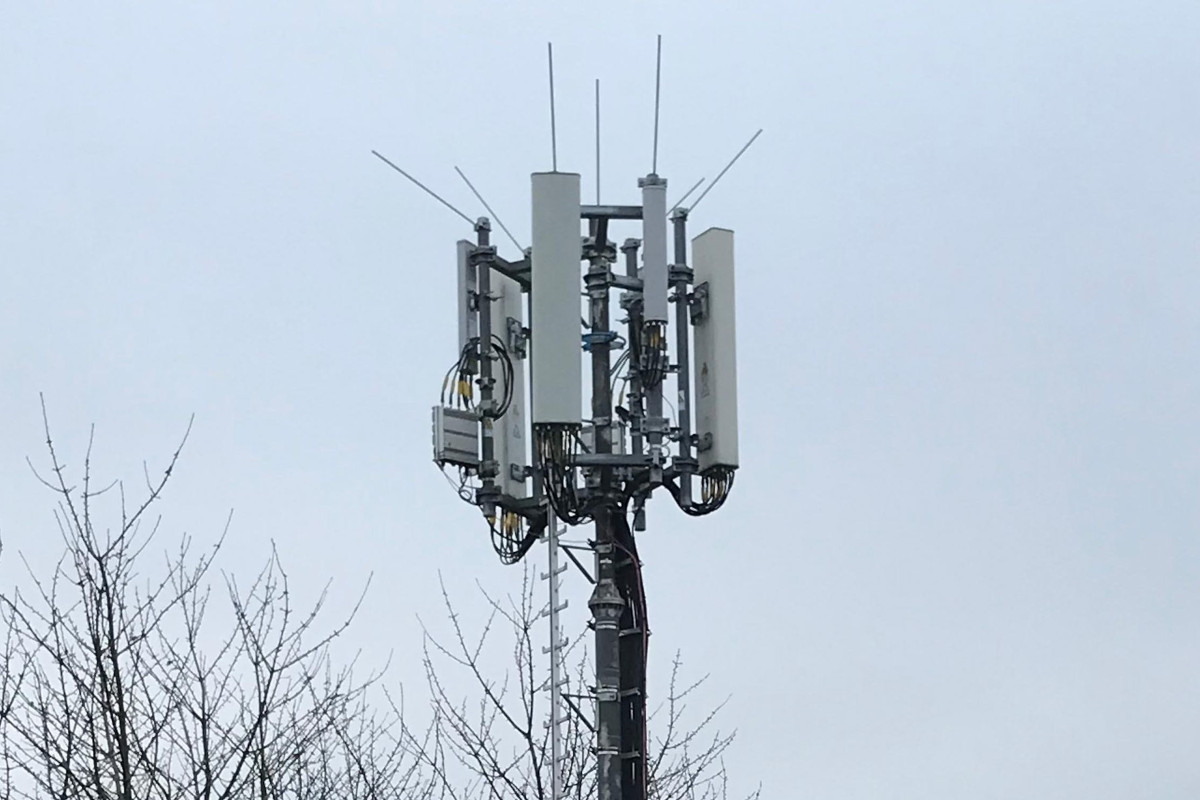
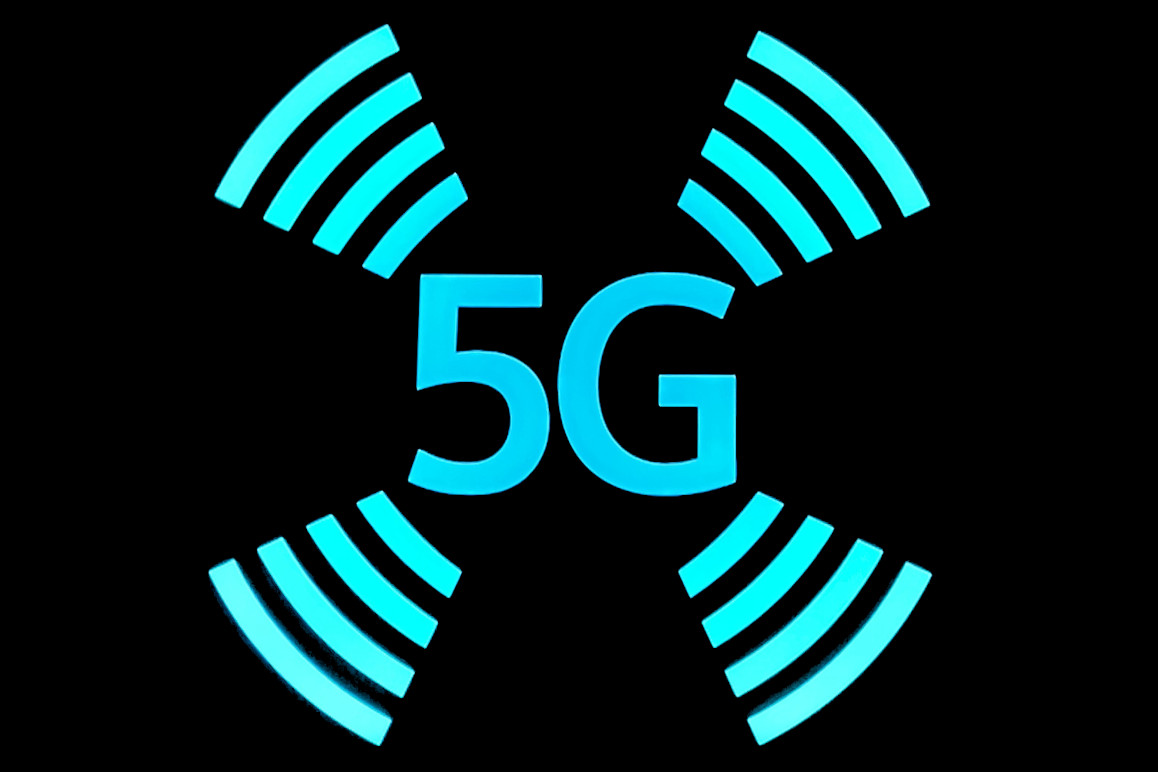


Leave A Comment